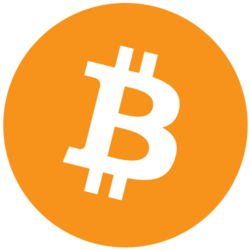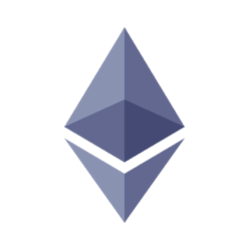Coin Launch Space is here to give you clear, accurate, and trustworthy information about crypto. Our team is made up of experts with real experience in crypto, finance, and new tech. Every article and page we publish is carefully reviewed by skilled editors to make sure it’s up to our high standards. We take pride in offering honest, easy-to-understand reviews based on real knowledge. Check out our editorial policy and see how we test and review crypto assets.
Coinbase’s Base blockchain is a scalable and efficient blockchain for decentralised applications (dApps). Users tend to transfer assets from different blockchains to interact with Base. Bridging, the process of moving assets between two blockchains, is what is happening. Since the official Base bridge was discontinued, the users are dependent on the third party bridging solutions. This guide will explore some ways to bridge funds to Base (while remaining cost effective and efficient).
Blockchain Bridges: Understanding
A blockchain bridge is a protocol that allows assets and data to be moved between different blockchains. Interoperability is crucial to these bridges, enabling users to transport assets across the networks with different mechanisms of consensus and token standards. Par bridges allow users to go between different ecosystems by using bridges to access different blockchains’ unique features and benefits.
Bridging Platforms
The Base blockchain bridges assets from several third party platforms. Here are some notable options:
1. Rango Exchange:
Currently, Rango Exchange supports over 60 blockchains including Ethereum, Arbitrum, Binance Chain, etc. It collects multiple bridges’ rates and gives users the best rate for transferring their funds. This feature makes sure users are able to get their asset transferred with the least cost involved.
2. RhinoFi:
Designed as a Layer 2 cross-chain bridge compatible with over 20 major networks, including Ethereum, Polygon, and Arbitrum, RhinoFi offers an easy onboarding to all networks via a DEX, a bridge from any network, and a step ladder to best DeFi experiences. Over a million wallets have successfully used it — indicating popularity and trust among the crypto community. RhinoFi is well known for its easy to use interface and strong security.
3. Across Protocol:
We support bridging between Ethereum, Polygon, Arbitrum, and Optimism networks. A particularly suited option for efficiency is it, being centered around low cost and low latency, which users would be attracted to if they seek such an option. To avoid the loss of transaction throughput, scalability, and reliability, across protocol is used to handle large volumes of transactions.
4. Orbiter Finance:
Base is a Layer 2 solution that Orbiter Finance is a multi chain bridge [that] focuses on. It supports many Ethereum Layer 2 networks such as Optimism, Mantle, and zkSync Era. Users rave about Orbiter Finance because of its fee structure and speed.
METASCHOOL
5. LayerSwap:
LayerSwap supports bridging our our over 25 networks including Ethereautm, Binance Smart Chain, Solana, and more. It allows both beginners and professional user to use easily. LayerSwap is also known for its very high liquidity, allowing users to execute large transactions without problems.
6. StealthEX:
StealthEX supports Bridginnetworks which includes Ethereum, Binance Smart Chain, Litecoin, and Zcash. It is a non custodial service, meaning all of the assets are owned by the users, and it stays under their control during the bridging process. The privacy features of StealthEX will also be known to you, since it’ll allow users to bridge the assets without revealing their identity.
7. Owlto Finance:
Owlto Financedoes support over 40 networks such as Ethereum, Binance Smart Chain and BSC, Avalanche, etc. It provides a security enhancement by offering an ability to bridge assets from users’ hardware wallets directly. Among other things, owlto finance also has low fees and fast transaction speed.
Steps to Bridge Funds to Base
1. Select a Bridging Platform:
Ensure a platform that allows base to transfer assets to. Choose supported networks, fees, and user experience.
2. Connect Your Wallet:
Popular wallets such as MetaMask, Coinbase Wallet, and Trust Wallet are the kind of wallets most bridging platforms will support. Make sure your wallet is compatible with the platform you are choosing.
3. Choose the Source Blockchain:
Choose which blockchain you are going to send assets from. Ethereum, Arbitrum, or Optimism are all common choices.
4. Select the Asset and Amount:
Select the token you want to bridge and input how much (a number). Make sure that the origin blockchain will support to send the vulnerable asset to the source base network.
5. Review and Confirm the Transaction:
Check the transaction details, including the fees and an estimated transfer time. You will then need to confirm the transaction in your wallet to begin bridging the process.
Fees and Transaction Times
The transaction fees that are required for bridging assets also depend on whether the source blockchain is bridged onto or the bridging platform involved. For example, bridging from Ethereum Mainnet costs anywhere from $10 to $100 depending on network congestion. On the other hand, Layer 2 solutions such as Arbitrum and Optimism usually cost $2 or less. The transaction times also change; transmissions from the Ethereum Mainnet may take place longer because of the congestion on the network whereas solutions from the Layer 2 are faster.
Conclusion
Many third party platforms exist for asset transfer to the Base blockchain bridging funds over to it is a simple process. Users can leverage a suitable bridging solution and following the steps outlined to smoothly move assets to Base and help it grow its ecosystem. When choosing a bridging platform, you should always consider the things like fees, supported networks and security.
Disclaimer: The content provided reflects the authors personal opinions and is influenced by current market conditions. Conduct thorough research before making any cryptocurrency investments. The author and the publication are not liable for any financial losses you may incur.























